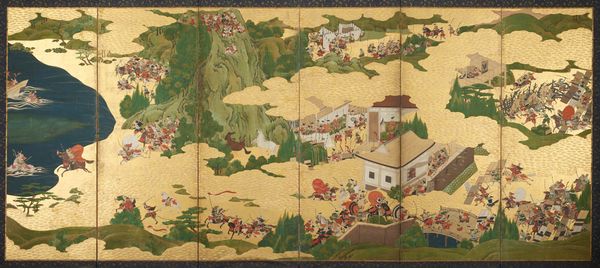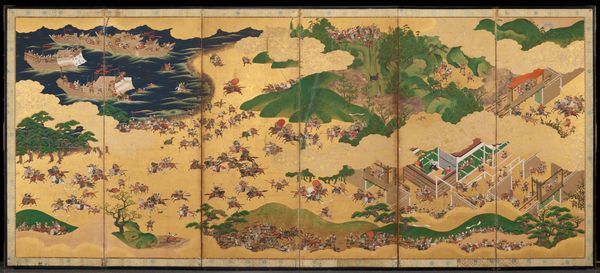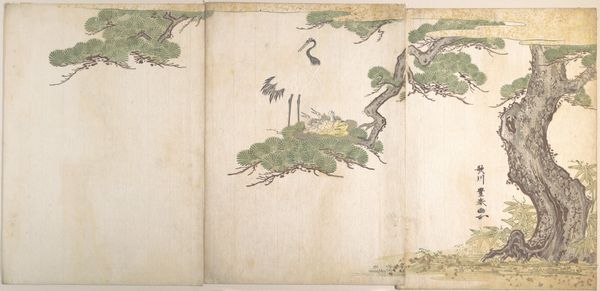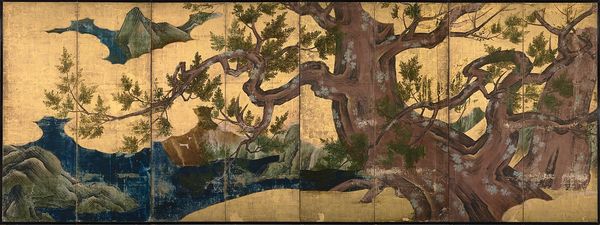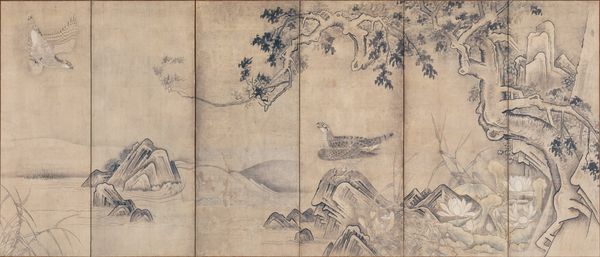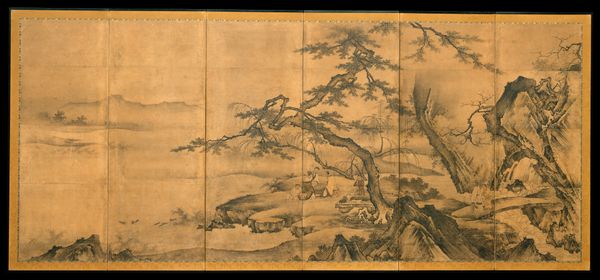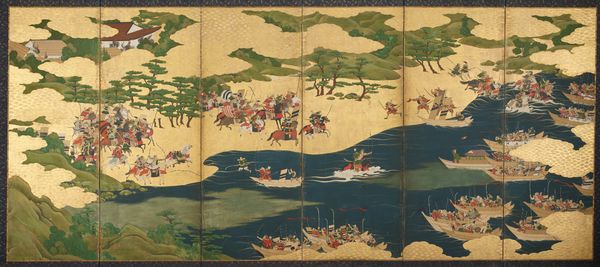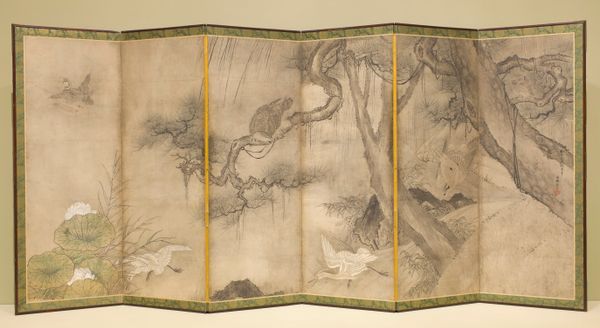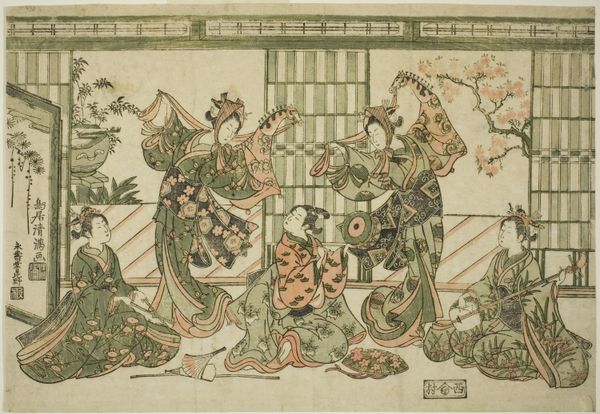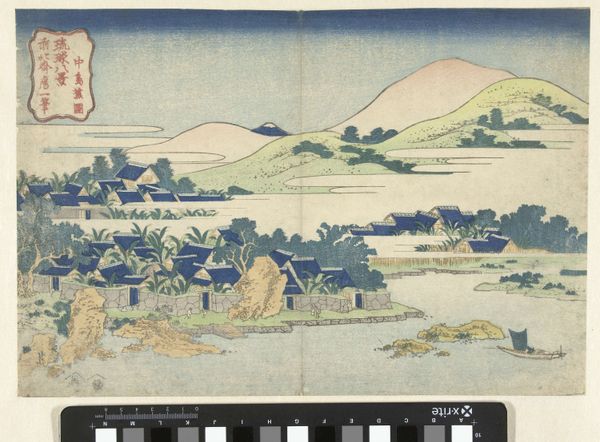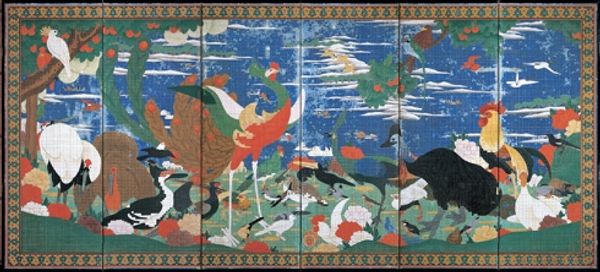
Nine Scenes from the Tale of Genji c. early 17th century
0:00
0:00
watercolor
#
water colours
#
asian-art
#
landscape
#
figuration
#
watercolor
#
genre-painting
#
watercolor
#
yamato-e
Dimensions: 31 3/4 × 127 3/4 in. (80.65 × 324.49 cm) (image)37 × 132 13/16 × 5/8 in. (93.98 × 337.34 × 1.59 cm) (outer frame)
Copyright: Public Domain
Curator: Here we have "Nine Scenes from the Tale of Genji," attributed to Tawaraya Sōtatsu, dating from the early 17th century. The work is currently housed at the Minneapolis Institute of Art. Editor: My immediate reaction is this: it's sumptuous! The gold leaf positively radiates opulence, doesn't it? Almost aggressively luxurious. Curator: Absolutely. The gold acts as a symbolic ground, signifying power, wealth, and the elevated status of the aristocratic world depicted in The Tale of Genji, an epic work of Japanese literature. Editor: Right. It also seems that the use of watercolor adds a delicate, ephemeral quality contrasting sharply with the gold—watercolor versus this almost industrial looking application of gold. A sort of pre-modern industrial feel. Curator: Indeed, the watercolors lend themselves well to the Yamato-e style, capturing the lyrical, poetic qualities associated with this classical Japanese aesthetic tradition. The scenes chosen would likely resonate deeply with contemporary audiences as significant moments from Genji’s story, filled with allusions to themes of love, loss, and the fleeting nature of existence. Editor: I find myself wanting to know more about the screens themselves. Was this piece commissioned? The labour involved must have been extensive, preparing and applying the gold leaf, carefully layering the watercolour details. Who was this made *for*, and how did its purpose impact the process of its production? Curator: Excellent question! The scale and extravagance certainly suggest a commission for someone of very high social standing, someone who not only appreciated the aesthetic beauty of the piece, but also wished to visually demonstrate their cultural knowledge and refinement. Displaying such screens was a social statement. Editor: So its very materiality broadcasts its social context. Gold, pigment, and labour working in perfect, visually arresting harmony to communicate meaning and social class. It's a compelling synthesis, actually. Curator: It truly is. "Nine Scenes from the Tale of Genji" gives us insight into artistic techniques and a glimpse into the values of a sophisticated society centuries ago. Editor: A fitting reflection on material culture meeting symbolic depth. This artwork opens up ways to perceive its multilayered history, indeed!
Comments
minneapolisinstituteofart almost 2 years ago
⋮
This screen shows nine scenes from consecutive chapters from the Tale of Genji in order from right to left. The far right panel depicts Genji sitting behind a writing desk and gazing out toward a setting sun. It is a specific moment from chapter 19 in which Genji, mourning the death of his lover, recites the following poem: “A rack of cloud across the light of evening, as if they, too, wore mourning weeds.” Moving left, each panel of the screen depicts a single scene from chapters 20 through 25. The far left panel actually includes two scenes from chapter 26, in which Genji first tries to seduce a young woman and then is rejected by her. Because this single eight-panel screen includes scenes from eight chapters, it was probably part of a much larger set of screens depicting scenes from all fifty-four chapters of the Tale.
Join the conversation
Join millions of artists and users on Artera today and experience the ultimate creative platform.

